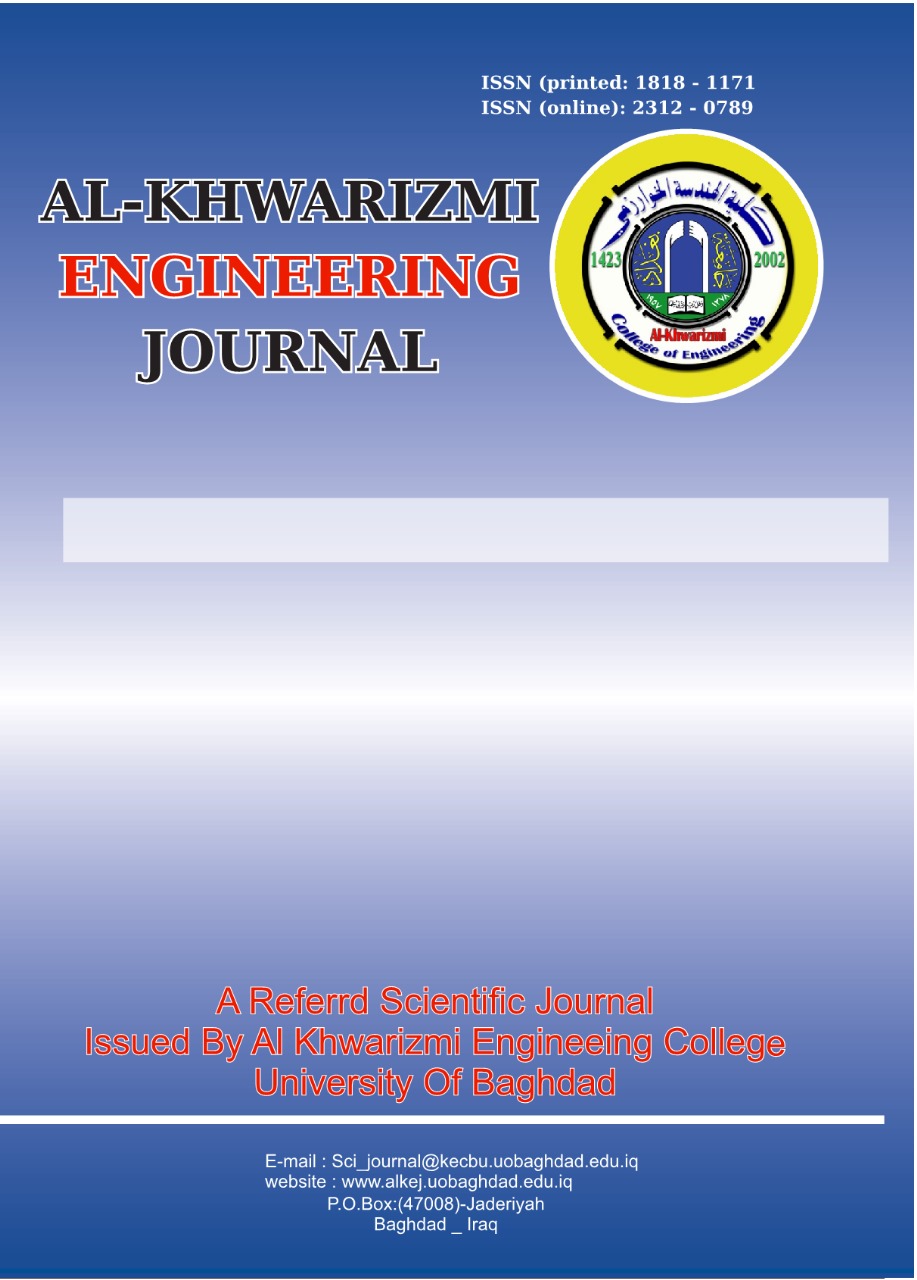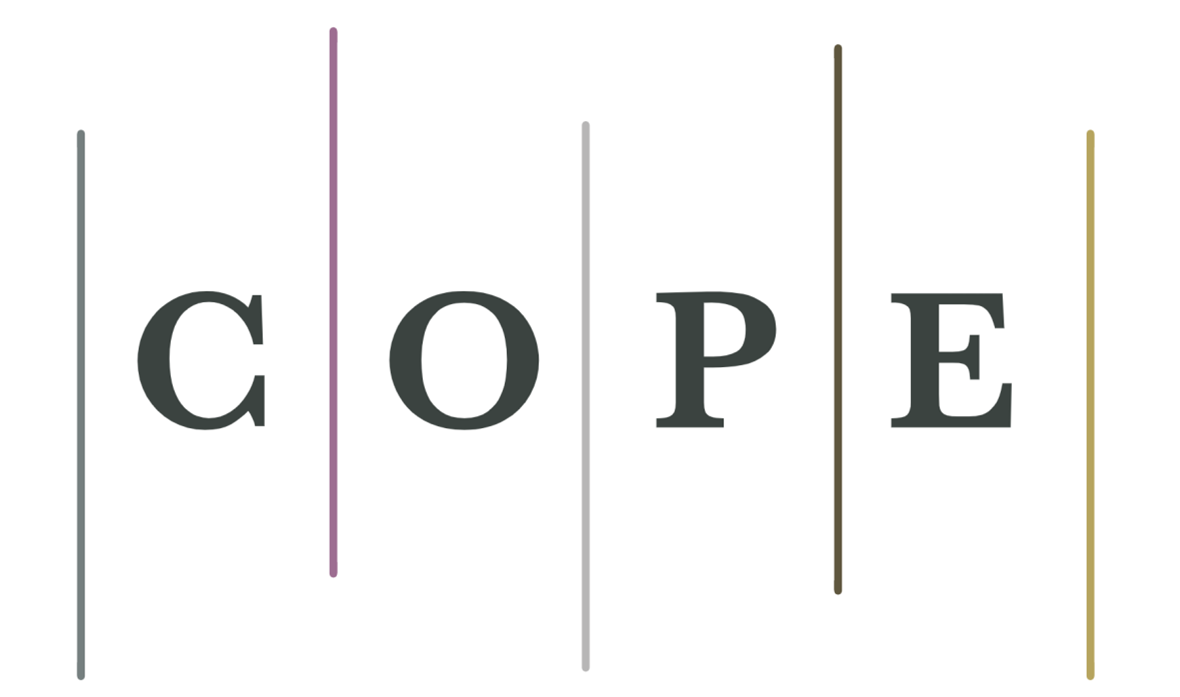Pulse Wave Speed Estimation: A Comparative Study of the PU-Loop Technique versus Tensile and Compliance Testing on Synthetic Elastic Tubes
DOI:
https://doi.org/10.22153/kej.2025.08.003Keywords:
Bramwell–Hill equation; Compliance testing; Moens–Korteweg equation; PU-loop; Tensile testing.Abstract
Pulse wave speed (c) is a key variable in haemodynamics and cardiovascular system analysis. It is directly related to arterial elasticity and inversely to distensibility of the arterial lumen. The pressure–velocity loop (PU-loop), derived from simultaneous velocity (U) and pressure (P) measurements, is used to estimate c, leveraging the linear U–P relationship during early systole, when reflected waves are absent due to bifurcations and/or occlusion. The PU-loop method was validated using tensile and compliance testing. Tensile testing, using a load cell, estimated Young’s modulus (E) of synthetic elastic tubes, allowing c calculation using the Moens–Korteweg equation. Compliance testing under static pressure assessed the relation between P and volume (V). This relationship predicted the compression and contraction courses, validating the testing applied to the lumen of the particular flexible tube. Consequently—to calculate the distensibility of the flexible tube lumen—the change in internal lumen volume due to the change in P was used, hence c corresponding to the Bramwell–Hill equation. Despite limitations such as sample size of tested specimens, experimental conditions not fully physiological, sensitivity of testing due to measurement noise; neglecting anisotropicity and heterogeneity of vessels; not accounting for the full complexity of real arterial behaviour and the use of synthetic elastic tubes stiffer than in vivo lumens, the calculated c (ccalculated), using the PU-loop technique, was in agreement with values acquired from compliance- and tensile-testing-based calculations. According to compliance and tension testing, the velocity of c was 19.5±0.05 and 19.5±0.012.1 m/s, respectively. Using the PU-loop technique, it was 20±0.25 m/s. These results validate the PU-loop methodology in c assessment.
Downloads
References
[1] Laurent, S., Cockcroft, J., Van Bortel, L., Boutouyrie, P., Giannattasio, C., Hayoz, D., Pannier, B., Vlachopoulos, C., Wilkinson, I. and Struijker-Boudier, H., 2006. Expert consensus document on arterial stiffness: methodological issues and clinical applications. European Heart Journal, 27(21), pp.2588–2605. https://doi.org/10.1093/eurheartj/ehl254.
[2] Miyatani, M., Yasuda, T., Fukumura, K., Iida, H., Yamasoba, T., Sato, Y. and Ishii, N., 2009. Pulse Wave Velocity for Assessment of Arterial Stiffness. Journal of Clinical Hypertension, 11(7), pp.411–417. https://doi.org/10.1111/j.1751-7176.2009.00139.x.
[3] Kim, H.L. and Kim, S.H., 2019. Pulse Wave Velocity in Atherosclerosis. Frontiers in Cardiovascular Medicine, 6, p.41. https://doi.org/10.3389/fcvm.2019.00041.
[4] Negoita, M., Hughes, A.D., Parker, K.H. and Khir, A.W., 2018. A method for determining local pulse wave velocity in human ascending aorta from sequential ultrasound measurements of diameter and velocity. Physiological Measurement, 39(11), p.114009. https://doi.org/10.1088/1361-6579/aae8a0.
[5] Manoj, R., Raj, K.V., Nabeel, P.M., Thomas, A., Karthikeyan, P., Suresh, S., Joseph, J. and Jayaraj, J., 2025. Measurement of pressure dependent variations in local pulse wave velocity within a cardiac cycle from forward travelling pulse waves. Scientific Reports, 15, p.3066. https://doi.org/10.1038/s41598-025-87143-z.
[6] Janjua, G.M.W., McLaughlin, J., Finlay, D.D., Guldenring, D. and Hadia, R., 2017. Novel non-invasive Pressure-Volume Loop measurement for local Pulse Wave Velocity estimation. 44th Computing in Cardiology Conference (CinC 2017), Rennes, France. https://doi.org/10.22489/CinC.2017.217-385.
[7] Segers, P., Swillens, A., Taelman, L. and Vierendeels, J., 2014. Wave reflection leads to over- and underestimation of local wave speed by the PU- and QA-loop methods: theoretical basis and solution to the problem. American Journal of Physiology-Heart and Circulatory Physiology, 306(3), pp.H426–H433. https://doi.org/10.1152/ajpheart.00751.2013.
[8] Van Den Bos, G.C., Wesseling, K.H., De Wit, B. and Settels, J.J., 2003. Automating the determination of wave speed using the PU-loop method. Proceedings of the 25th Annual International Conference of the IEEE Engineering in Medicine and Biology Society, 4, pp.3700–3703.
[9] Arias, D.C., Vignon-Clementel, I.E., Figueroa, C.A., Taylor, C.A. and Jansen, K.E., 2019. A 1D arterial network model analysis. Journal of Biomechanics, 83, pp.1–8. https://doi.org/10.1016/j.jbiomech.2019.01.002.
[10] Aguado-Sierra, J., Alastruey, J., Davies, J., Nordsletten, D., Brown, M., Parker, K.H. and Figueroa, C.A., 2006. Arterial pulse wave velocity in coronary arteries. IEEE Transactions on Medical Imaging, 25(10), pp.1284–1293. https://doi.org/10.1109/TMI.2006.881311.
[11] Ma, Y., Li, Y., Wang, Y., Wang, Y., Wang, Y. and Wang, Y., 2018. Relation between blood pressure and pulse wave velocity in the general population. Proceedings of the National Academy of Sciences, 115(52), pp.13289–13294. https://doi.org/10.1073/pnas.1814392115.
[12] Tripathi, A., Khir, A.W. and Parker, K.H., 2017. A Pulse Wave Velocity Based Method to Assess the Mean Arterial Pressure. Frontiers in Physiology, 8, p.855. https://doi.org/10.3389/fphys.2017.00855.
[13] Spronck, B., Heusinkveld, M.H.A., Hughes, A.D., Heethaar, R.M. and Westerhof, B.E., 2023. 2024 Recommendations for Validation of Noninvasive Arterial Stiffness Measurement Devices. Journal of Hypertension, 41(1), pp.1–10. https://doi.org/10.1097/HJH.0000000000003271.
[14] Wilkinson, I.B., McEniery, C.M., Schillaci, G., Boutouyrie, P., Segers, P., Donald, A., Chowienczyk, P., Parker, K.H., Laurent, S. and Cockcroft, J.R., 2020. Uses of Arterial Stiffness in Clinical Practice. Arteriosclerosis, Thrombosis, and Vascular Biology, 40(3), pp.666–672. https://doi.org/10.1161/ATVBAHA.120.313130.
[15] Salvi, P., Grillo, A., Pini, A., Alonzo, A., Balbarini, A., Parati, G. and Mancia, G., 2022. Non-Invasive Assessment of Arterial Stiffness: Pulse Wave Velocity. Journal of Clinical Medicine, 11(8), p.2225. https://doi.org/10.3390/jcm11082225.
[16] Cho, J., Lee, J., Park, K. and Kim, S., 2020. A comparative study of brachial–ankle pulse wave velocity. MDPI Sensors, 20(7), 2073.
[17] Karaki, M., Watanabe, T., Yoshida, K., Ito, S. and Takahashi, H., 2025. The validity of carotid-femoral pulse wave velocity in the assessment of arterial stiffness. Journal of Applied Physiology, 128(1), pp.73–80. https://doi.org/10.1152/japplphysiol.00073.2024.
[18] Mourad, J.J., Blacher, J., Blin, P., Hoeks, A. and Safar, M.E., 2001. Creatinine clearance, pulse wave velocity, carotid compliance and essential hypertension. Kidney International, 59(5), pp.1834–1841. https://doi.org/10.1046/j.1523-1755.2001.0590051834.x.
[19] Zhou, Y., Wang, Y., Zhang, L., Li, X., Zhang, Y. and Wang, Y., 2020. P125 Local Pulse Wave Velocity in the Arterial Tree. Atlantis Press.
[20] Vappou, J., Luo, J. and Konofagou, E.E., 2010. Pulse Wave Imaging for Noninvasive and Quantitative Measurement of Arterial Stiffness in vivo. American Journal of Hypertension, 23(4), pp.393–398. https://doi.org/10.1038/ajh.2010.8.
[21] Aimagambetova, B., Ilyasova, N., Kadyrova, I., Khamzina, Y., Kadyrov, A., Khamzina, Y., Kadyrov, A. and Khamzina, Y., 2024. Arterial stiffness measured by pulse wave velocity correlated with cognitive function in elderly patients. BMC Neurology, 24, p.390. https://doi.org/10.1186/s12883-024-03905-8.
[22] Gheysen, L., De Backer, J., De Wilde, D., De Backer, J. and De Wilde, D., 2023. Pulse wave velocity: A clinical measure to aid material characterization of vascular tissues. Journal of the Mechanical Behavior of Biomedical Materials, 137, p.105519. https://doi.org/10.1016/j.jmbbm.2022.105519.
[23] Roberts, P.A., Davies, J.E., Hughes, A.D., Parker, K.H. and Francis, D.P., 2015. Real-time aortic pulse wave velocity measurement during exercise stress testing. Journal of Biomechanics, 48(5), pp.847–853. https://doi.org/10.1016/j.jbiomech.2015.01.013.
[24] Bogatu, L.I., Ding, Z., Li, Y., Wang, Y. and Duan, Y., 2020. A modelling framework for assessment of arterial stiffness using pulse wave velocity. Computer Methods and Programs in Biomedicine, 190, p.105362. https://doi.org/10.1016/j.cmpb.2020.105362.
[25] Woodman, R.J., Kingwell, B.A., Beilin, L.J., Hamilton, S.E., Dart, A.M. and Watts, G.F., 2005. Assessment of central and peripheral arterial stiffness. American Journal of Hypertension, 18(2), pp.249–254. https://doi.org/10.1016/j.amjhyper.2004.07.023.
[26] Salvi, P., Magnani, E., Valbusa, F., Agnoletti, D., Alecu, C. and Benetos, A., 2008. Comparative study of methodologies for pulse wave velocity. PubMed, 18528411.
[27] Bramwell, J.C. and Hill, A.V., 1922. The velocity of the pulse wave in man. Proceedings of the Royal Society of London. Series B, Containing Papers of a Biological Character, 93(652), pp.298–306. https://doi.org/10.1098/rspb.1922.0022.
[28] Korteweg, D.J., 1878. Ueber die Fortpflanzungsgeschwindigkeit des Schalles in elastischen Röhren. Annalen der Physik und Chemie, 241(12), pp.525–542.
[29] Khir, A.W., O’Brien, A., Gibbs, J.S.R. and Parker, K.H., 2001. Determination of wave speed and separation of waves in arteries. Journal of Biomechanics, 34(9), pp.1145–1155. https://doi.org/10.1016/S0021-9290(01)00076-8.
[30] Hacham, W. S., Abdulla, N. N., Al-Ammri, A. S., and Khir, A. W., 2015. Wave speed and reflections proximal to aneurism and stenosis of flexible tubes, Proceedings of the 37th Annual International Conference of the IEEE Engineering in Medicine and Biology Society (EMBC), 2015, Milan, Italy, pp.1009-1012, https://doi.org/10.1109/EMBC.2015.7318535.
[31] ASTM International, 2021. ASTM D412-16: Standard Test Methods for Vulcanized Rubber and Thermoplastic Elastomers—Tension, West Conshohocken, PA: ASTM International.
[32] International Organization for Standardization, 1998. ISO 9276-1: Representation of results of particle size analysis–Part1: Graphical representation, Geneva: ISO.
Downloads
Published
Issue
Section
License
Copyright (c) 2025 Al-Khwarizmi Engineering Journal

This work is licensed under a Creative Commons Attribution 4.0 International License.
Copyright: Open Access authors retain the copyrights of their papers, and all open access articles are distributed under the terms of the Creative Commons Attribution License, which permits unrestricted use, distribution, and reproduction in any medium, provided that the original work is properly cited. The use of general descriptive names, trade names, trademarks, and so forth in this publication, even if not specifically identified, does not imply that these names are not protected by the relevant laws and regulations. While the advice and information in this journal are believed to be true and accurate on the date of its going to press, neither the authors, the editors, nor the publisher can accept any legal responsibility for any errors or omissions that may be made. The publisher makes no warranty, express or implied, with respect to the material contained herein.
















